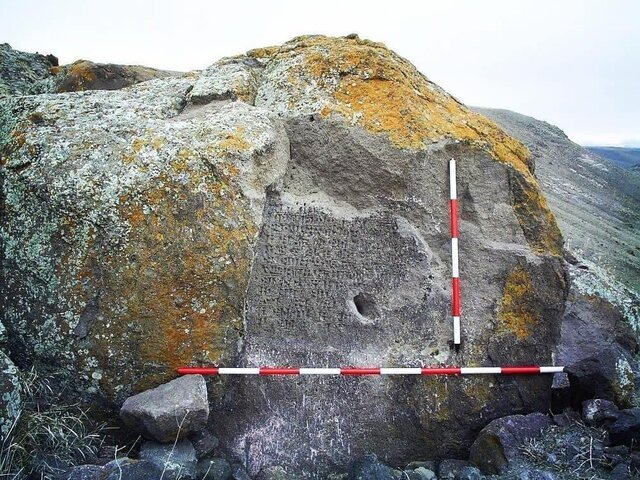Urartu-era cuneiform inscription vandalized in northwest Iran

TEHRAN - Treasure hunters have vandalized an ancient cuneiform inscription and Iron Age cemetery in East Azarbaijan province, northwest Iran.
The 2,800-year-old inscription, carved during the Urartu period, has suffered significant damage, while the surrounding cemetery has been plundered by looters, ISNA reported on Monday.
The archaeological site, known as Nashtiban, located in the village of the same name, contains a fortress, a unique cemetery with standing stones, and the now-damaged Urartu cuneiform inscription. According to archaeologists, this inscription dates back to the 8th century BC and was registered in Iran’s National Heritage list in 1968 under entry No. 792.
Archaeologist Hayyan Jabbarzadeh, who recently conducted a field survey at the site, described the situation as “critical.”
He noted that the graveyard, marked by bulky, upright stones rare in Iran, has been severely disturbed by looters. The ancient inscription, which holds significant historical value as one of the most important written records in northwest Iran, bears clear signs of vandalism, including marks from pickaxes and power drills.
The site’s poor preservation conditions, exacerbated by weathering and the continuous actions of treasure hunters, have prompted concerns among experts.
“This site, containing one of the most valuable cuneiform inscriptions from the Urartu Empire, is in a precarious state,” Jabbarzadeh told ISNA.
The Urartu kingdom, which thrived during the Iron Age, was centered around the highlands between Lake Van, Lake Urmia, and Lake Sevan.
Despite the site’s cultural importance, local officials have reportedly not taken adequate action to protect it from ongoing looting. Jabbarzadeh expressed concern over the lack of intervention to prevent further destruction, calling for urgent measures to safeguard the remaining artifacts.
AM
Leave a Comment